HIStalk Practice Interviews R. Michael Kroeger
R. Michael Kroeger, MD, FACS is a urologist with The Urology Center PC of Omaha, NE.
Give me some background on your practice.
We’ve been expanding, so I always have to stop and think. We’ve got 12 urologists and one physician assistant. We have one main office, but we have a total of five offices here in this area; and then about four or five outreach locations in western Iowa. We’ve got our own ASC. We’ve got two Medicare-approved operating rooms; an ambulatory surgery center. Within the last year and a half, we got our own CT scanner. We’ve got a bone density machine; conventional x-ray. Our specialty is urology.
What kind of software are you using?
We’ve had a practice management system since we started. This practice was actually created in about 1989, and I think we were both on manual practice management systems at that time. We started out with a company called MEDS that was in Dallas.
After about eight or nine years, in 1994, we switched to IDX for practice management. Then we got a network for the doctors to use for kind of interoffice communication and scheduling. This was the late ‘90s. We were using Palm Pilots and that sort of thing, so it was nice to be able to synchronize up with the scheduling system that we used in the office.
Actually, our vendor that set up the network encouraged us to use Lotus Notes. I know it’s a very powerful program — maybe a little more than we needed. We’ve still got Lotus Notes. We use it mainly just for the e-mail function and are kind of wondering a bit if we should switch to Outlook for compatibility reasons and so forth.
As far as clinical things, there’s nothing we really had that could be considered a clinical application until we got the EMR. Urodynamics has some software involved, but that’s really just single modality there.
It wasn’t until we got the EMR that we had any clinical IT applications. That’s one of the things that we’ve been able to do with this particular application. I don’t know if it would be the same for others, but we’ve been able to create a lot of documentation tools for the ASC that we just created from scratch, basically. They weren’t off-the-shelf kind of applications, and that’s been quite helpful. It allowed us to do most all of our documentation in the EMR. We do some general anesthesia in the ASC and that’s still completely on paper, but pretty much everything else is EMR.
Tell me about the EMR. Which one you’re using and how long? How did you decide on it?
Well we started talking about it in the early 2000s, about 2001 or so. I’ve been interested in it a long time and I saw a demo actually, by Mark Leavitt. That’s the name of the guy that’s now the head of CCHIT. He had a company called MedicaLogic at the time. I went to a VHA meeting and he gave a demo of MedicaLogic and I kind of got fired up about it. This was probably in the mid ‘90s.
We actively started talking about it in 2001. Every year, we’d have long-range planning and next year was going to be the year. It wasn’t quite ready yet … that sort of thing.
We finally, about three years or so ago, got into more of a formal selection process. There was a speaker at our national meeting from The Coker Group who gave a talk and kind of led us to believe that he had had a special interest in urology, and we ultimately engaged him to help us in kind of doing a little hand-holding, I guess, to kind of get us over the hurdle.
Again, we talked about it for many years and really hadn’t taken any action. Then we set up an RFP. I’ve got a hospital job in medical informatics and so I’ve been to HIMSS and that sort of thing, so I had a chance to visit a lot of vender groups. I kind of had an idea of what was out there. They helped us get a short list of vendors.
The hospital that I referred to is a Cerner place. We looked at what Cerner had on the outpatient side. I think I was sort of OK with it. I’m well aware of the limitations of Cerner. I think Laura, our practice administrator, had some real skepticism about some of the scheduling things and so forth. So we kind of scratched that from our list pretty early. At one point we were down to eClinicalWorks and A4, which had just been purchased by Allscripts.
I kind of liked eClinicalWorks; she kind of liked A4. Then I was reading a discussion board, EMR Update, and somehow I ran across Bond Clinician. Somebody had mentioned that they thought it was particularly good for surgical practices. We got a demo from them and thought it maybe was a good …. kind of met in the middle.
It’s a Web-based program. It’s got kind of a different kind of a cool look to it and very customizable and so forth, and so we ended up going with it. We knew it was a small company. I guess I never would have guessed, when we started out, we would have ended up with something like that. I thought we would have ended up with maybe a larger vendor. And now we are with a larger vendor, so it all kind of works out.
So you’ve been up and running now for about how long?
About a year and a half.
Has it been pretty well adopted by all of your physicians?
Well, it’s been adopted by all the physicians. The “pretty well” I don’t know. I think as well as could be expected. There clearly are things that frustrate people. I think most of them are more just the whole dealing with change and so forth, not so much this particular product.
I think we’ve been fortunate since it still is, in a sense, kind of a small company mentality in terms of the people that are working on this particular product. Even though it’s now under the Eclipsys umbrella, we’ve been able to get a lot of our issues addressed pretty rapidly by the Peak Practice staff, and so we’ve been real happy with that.
How are you and your partners actually putting the information into the system? Are you dictating? PCs?
We’ve created several templates for different clinical issues, although in actual practice, I think most of us use primarily generic templates. We’ve got generic mail and generic e-mail templates. I would guess that over half of the notes are done using those templates.
For certain visits — follow-ups, cancer patients and so forth — you’re always kind of looking for the same set of information on each visit. We’ve been able to use some specified notes for that. Doing the HPI in a structured, clicking template kind of mode is not very satisfying, I think, for most of us, and so most of us do dictation using Dragon or typing.
Some of the guys’ keyboarding skills are really quite, quite, good. So HPI, in Plan, we do a lot of pre-text, either Dragon or keyboard. Everything else we’re able to do mainly with the template, like for the physical exam. That, of course, plays well into the coding aspect.
One of the things that we wanted to do was to be able to improve our coding accuracy. I think we underestimated how much work it would be just to get the thing going. Now we’re kind of circling back and trying to add some of these extra features that we wanted in the first place, like the coding aspect.
But I’m certainly not saying that people don’t complain about it, but I think people like it. They like the access. Since it’s a Web application, if you’re at home, it’s literally just like being in the office. You can access it from the hospital and that’s been so very powerful. So, they like to use it to look up information, but as is always the case, they don’t like putting information in.
Do you have PCs in every exam room?
No, we don’t. We’ve got wireless, convertible laptop/tablets, and that works pretty well. I think there’s some thought that it would be nice to have a PC in every room with a larger screen; particularly when we want to show patients x-ray images and that sort of thing, and we’ve talked about that.
I think sometimes the architecture of your building dictates how successful that is. How large your exam rooms are and whether you’re able to put them in in such a way that you don’t have to turn your back to the patient and so forth, so we’re certainly toying with that idea. But for now, we’ve got something that works and that hasn’t really been a pressing issue for us. But I think eventually, as we get more connectivity to PACs systems and images and so forth, we’ll probably want to have PCs in the room.
Has the passage of the ARRA legislation changed your focus at all in terms of technology adoption?
Well, I think so. Again, we have started on this pathway well ahead of any inkling that that was going to happen. I think it maybe has changed the timetable and maybe helped us focus on making sure that we do those elements that are going to be needed to get the money. I mean, if we’re going to do this and there’s money to be gotten, we might as well make our timetable fit the schedule that will allow us to get that stimulus money.
Sounds like you’re pretty well connected with your medical informatics role and HIMSS. What’s your impression — why do you think EMR adoption still remains pretty low?
I think the main issue’s cost. I think for a lot of people it’s very hard to justify the cost. It’s hard to show that there’s truly any return on investment; and then resistance to change in general, and the fact that it probably is going to slow you down, at least for a period of time.
Ultimately, I think probably the best you can hope for is going to be time-neutral. I think to argue that you’re actually going to save time with an EMR; maybe some people can do that, but I don’t think that’s a realistic goal, at least at the current level of the technology.
What’s next for your practice in terms of technology adoptions? Do you have any additional plans? Or just tweaking what you have?
We’re not really looking into any other software products in particular. There are lots of things that this product has available that we would like to get back to. Actually, one of the things that we bought this for was it had a surgery scheduling. They call it Surgery Planner. Then when we tried to actually use the Surgery Planner, it really didn’t fit our workflows for a variety of reasons. So we’re hoping that we can kind of circle back with the Peak Practice people and get a project going to make a better surgery scheduling planner.
We’d like to do the patient portal, which is available. We’ve already got access to that. A patient kiosk that gives us access to the instant medical history. They call it IntelliHistory, and we’ve just had difficulty. We’ve tried with a couple of conditions getting that to work and we’ve just had some issues there. Are you familiar with Allen Wenner and Instant Medical History?
No, I’m not.
IMH is just a tool that you can basically put the patient in front of a computer and they’ll take a history. You have to tee it up and say, this is about blood in the urine or this is about chest pain or whatever; and it’ll ask them questions; it’s not just a flat fill-in-the-blank kind of thing. It branches. So if you say, “Yes, I get up at night to urinate,” it’ll ask you a bunch of questions that apply to that, and it will take that and it will actually fill in your history of present illness for you. I think for some patients, that could be a great time-saver.
Wenner argues that actually, you can do a better history by using a tool like that. People might be more inclined to answer honestly through a machine than they would sitting face-to-face with a person about, maybe, some delicate issues. And so I think it’s a great concept. Again, it addresses that data entry issue. You can actually get the patient to enter the data directly for you. But it, again, we’ve had some challenges getting that to work.
Another thing, in our state, the statewide RHIO, which is called NeHII, Nebraska Health Information Initiative — we’re participating in that as one of the pilot sites for that. We are hoping to be able to actually get an interface to Peak Practice so we can selectively pull in data so we don’t have to look it up on the NeHII system and enter it into our system.
.

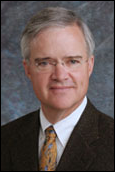

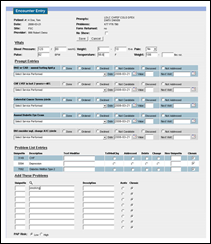
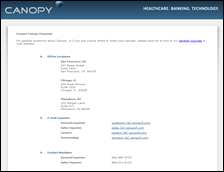


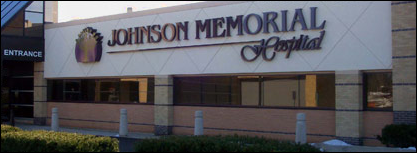
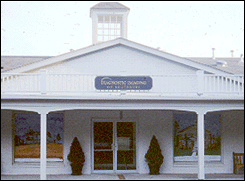

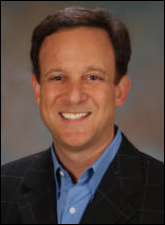
The article about Pediatric Associates in CA has a nugget with a potentially outsized impact: the implication that VFC vaccines…